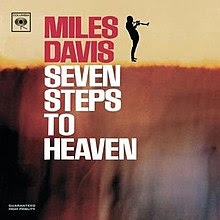First step: Overall
Define the overall scope of the analysis. (e.g. Blöschl et al., 2019)
Document about the literature existing on the catchments. Including papers appeared in any type of studies. Choose a large set of performances indicators (depending on the model use and objectives) (Addor et al., 2017). Set a strategy for assessing the results uncertainty and variability. (e.g. Clark et al., )
Second step: Geomorphology
Extract the catchment from DEM by state-of-art analysis tools (as TauDEM or the Horton Machine Toolbox). Investigate if the surface catchment corresponds to the effective catchment (i.e. if including/excluding karst is an option). Control the surface water network extension (talk at the GSS2021). Analyze the presence and the number of lakes/reservoirs. Discuss the catchment connectivity.
Third step: Hydrological Data
Analyze the time series of available data and make a comparison between rainfall and runoff amounts. Analyze any other time series or map time series, like map of snow and evapotranspiration (Abera et al., 2017). Define the calibration set and the validation set.
Fourth step: Modelling Setup
Setup the space partitioning type and of the catchment (Dal Molin, 2021). Discuss the data density required (or possible). Setup the modelling solution (MS). Choose the model among existing ones for adequacy not for legacy (Addor, 2019). Choose a model structure as hypothesis zero (Fenicia and Kavetski, 2021, VimeoVideo). Choose a better modelling structure (Clark et al., 2011). Analyze the MS parameters and discuss its variability. Plan the model runs (thinking to open science protocols, Hall et al., 2021).
Fifth step: Modelling Execution
Executing the model, including discharges, snow and ET. Annotate the model performances issues.
Sixth step: Results Delivery
Show the results appropriately (discharge analysis is not the only one quantity to watch at). Analyze the performances of indicators. Add comments and discussion. Assess results confidence.
Seventh step: Deployment
Deploy the results for open science and public discussion (e.g. Hall et al., 2021).
References
Abera, W., G. Formetta, and L. Brocca. 2017. “Modeling the Water Budget of the Upper Blue Nile Basin Using the JGrass-NewAge Model System and Satellite Data.” Hydrology and Earth System Sciences. http://nora.nerc.ac.uk/id/eprint/517346/.
Addor, Nans, Andrew J. Newman, Naoki Mizukami, and Martyn P. Clark. 2017. “The CAMELS Data Set: Catchment Attributes and Meteorology for Large-Sample Studies.” Hydrology and Earth System Sciences 21 (10): 5293–5313.
Addor, N., and L. A. Melsen. 2019. “Legacy, Rather Than Adequacy, Drives the Selection of Hydrological Models.” Water Resources Research 55 (1): 378–90.
Blöschl, Günter, Marc F. P. Bierkens, Antonio Chambel, Christophe Cudennec, Georgia Destouni, Aldo Fiori, James W. Kirchner, et al. 2019. “Twenty-Three Unsolved Problems in Hydrology (UPH) – a Community Perspective.” Hydrological Sciences Journal 64 (10): 1141–58.
Clark, Martyn P., Andrew G. Slater, David E. Rupp, Ross A. Woods, Jasper A. Vrugt, Hoshin V. Gupta, Thorsten Wagener, and Lauren E. Hay. 2008. “Framework for Understanding Structural Errors (FUSE): A Modular Framework to Diagnose Differences between Hydrological Models.” Water Resources Research, Water Sci. Appl., 44 (12): 2135.
Clark, Martyn P., Dmitri Kavetski, and Fabrizio Fenicia. 2011. “Pursuing the Method of Multiple Working Hypotheses for Hydrological Modeling: HYPOTHESIS TESTING IN HYDROLOGY.” Water Resources Research 47 (9). https://doi.org/10.1029/2010wr009827.
Dal Molin, Marco. 2021. “Improvement and Application of Flexible Frameworks for Modelling Regional Streamflow Variability.” Edited by Marco Schirmer Fabrizio Fenicia. Ph.D., Université de Neuchâtel.
Fenicia, Fabrizio, and Dmitri Kavetski. 2021. “Behind Every Robust Result Is a Robust Method: Perspectives from a Case Study and Publication Process in Hydrological Modelling.” Hydrological Processes 35 (8). https://doi.org/10.1002/hyp.14266.
Hall, Caitlyn A., Sheila M. Saia, Andrea L. Popp, Nilay Dogulu, Stanislaus J. Schymanski, Niels Drost, Tim van Emmerik, and Rolf Hut. 2021. “A Hydrologist’s Guide to Open Science.” Hydrol. Earth Syst. Sci. https://doi.org/10.5194/hess-2021-392.
—————
TRANSCOM ISP – Free Sigma HSE Email
Level 6 Domain Names are FREE – Register Now.


